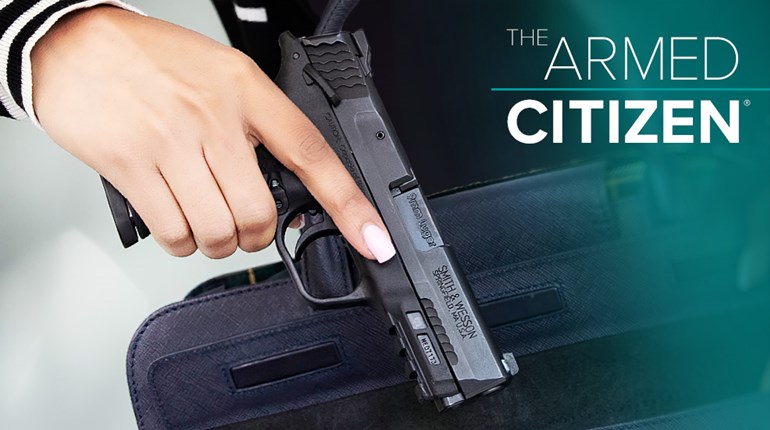
Some seasoned readers might catch a hint of Africaphile, novelist and big gun guy Robert Ruark in our title, and we readily concede that we have borrowed. What might make our invocation intriguing is the quite different sort of “enough” that we propose.
The roughly 11-lb. double rifles and cigar-sized cartridges of Robert Ruark’s African adventures are, we concede, a “long chalk” from the Kimber Ultra CDP II in 9 mm. But since the mighty mbogo of “Suicide Made Easy” (1953, Field & Stream and still a fine read) is not our goal, but discreet carry in a 1911-pattern pistol may be, then the Kimber commends itself if by nothing more than form factor. Just enough gun, perhaps.
It might be useful to know that a longish history attends 1911s at or near this size threshold. Generally, 1911 fans know them as the “Officer’s Model” class, dating back to 1975 for military issue to general officers, with commercial versions following somewhat later from companies like Detonics (the “Combat Master”) and, in 1985, a Colt “Officer’s ACP.” We hate to get ahead of ourselves, but this pistol simply rocks.
We shot them all with relative success, as well as relative likes and dislikes. With 3-in. barrels, they were decidedly easier to discreetly carry. But at 34 oz. unloaded, they still demanded careful belt and holster selection. Shooting-wise, the lighter weight and shorter barrel made them somewhat bucky, and precision (due to a shorter sight radius) came, but only with diligence and particular attention to grip and trigger mechanics.
Cycling the action for loading, unloading or malfunction clearing was also a pain. All but one used a double-spring recoil system of substantial and higher “rate” than standard 1911s. Combined with the smaller slide-grasping real estate of the shorter length, it made “officer’s” pistols a challenge for anyone without substantial hand strength. Certainly, they filled a niche, but any true advance was modest.
Whatever their shortcomings (or strengths), now would be a good time to forget about ’em. For all but the most die-hard .45 ACP adherents, the answer to discreet 1911 carry is—quite likely—decisively at hand in the Kimber Ultra CDP II in 9 mm.
We hate to get ahead of ourselves, but this pistol simply rocks.
With a good holster and belt, even full-sized 1911s weren’t the tough carry you might imagine, mainly because the John Browning design is thin (1.28 in., though the 8.7-in. length remained a challenge). The Ultra CDP II shares that trimness, and adds to it dramatic weight loss via the aluminum frame: Loaded to 8 + 1, it’s only 30 oz. That number may not convey much by itself, so consider: The standard-sized/calibered (5-in./.45 ACP), all-steel version with the same round count weighs 44 oz. Even we can do that math—a 32 percent advantage. In case you wondered, it’s a sliver under 2 inches shorter, too.
Since we’re sure your high school science hasn’t deserted you entirely, this might incite a (quite correct) “uh-oh …” reflex, since the same low mass and shorter barrel that improve carryability generally add felt recoil. Well, more good news: That’s not so to any obvious extent in the Ultra CDP II. The most striking feature in all our testing is the docile nature of the pistol, even with “thumpy” defensive loadings. (We had a particularly excellent way to compare and contrast this, too, using Federal Ammunition’s “Personal Defense Combo Pack”: 124-grain training/practice ammo packaged with 124-grain defensive rounds. No-brainer warning: Get some.) So many details, big and small, on the Ultra CDP II are “just right” that running them all down isn’t practical.
We attributed this dramatically smooth functioning to a combination of several features, all of which point to very precise features integration and testing processes by Kimber. Remember that, for power, 1911s are intrinsically more controllable than many newer designs due to a low bore axis. After more than 100 years, the 1911 still all but owns this space. We doubt the folks at Yonkers would claim any credit: It’s a feature of the 1911 pattern, not just of the Ultra CDP II.
But what they can rightly claim are things like the shape of the beavertail/grip safety, and the positioning of the levers on the ambidextrous safety. If these aren’t right (and we could name two manufacturers who’ve missed this boat), the pistol has won’t-go-bang problems of a very serious nature. There was not a hint of this in our hands: We executed a lot of cover-garment draws from the (really superb) Dale Fricke Nehemiah Strong Side Carry IWB Holster, hovering at the mid 1.5xs for the first shot, and 1.7x for “A” pairs at defensive distances. And we know we’re slow on safety-off: 1.3s should be easy with practice.
Another “big deal” is a little technical, but deserves mention. Based on competition experience, we’ve long thought stock 1911s of almost every stripe were over-sprung. In defense of manufacturers, there were and are good reasons for their choices, though this doesn’t make the type easier to cycle, nor any smoother shooting—indeed, quite the opposite. On the Ultra CDP, we think the guide rod/dual spring rate (16#) is ideal. It’s enough to assure reliable functioning even with unorthodox (or one-handed) shooting positions, yet takes juuuuuuussst enough off to make slide manipulation noticeably better and shooting very noticeably smoother.
We could go on and on, but there’s little need: The perfect sum-up comes readily to mind. Most folks who decide to protect themselves and loved ones through the acquisition of concealed carry skills and credentials need a second gun. Nothing wrong there; in fact, many aspects are a virtually perfect fit for the Kimber Ultra CDP II in that role. But it’s our considered opinion that the Ultra CDP II is an easy “step skipper” if you’ve yet to get a pistol at all.
If that isn’t more than “enough gun,” what is?


































